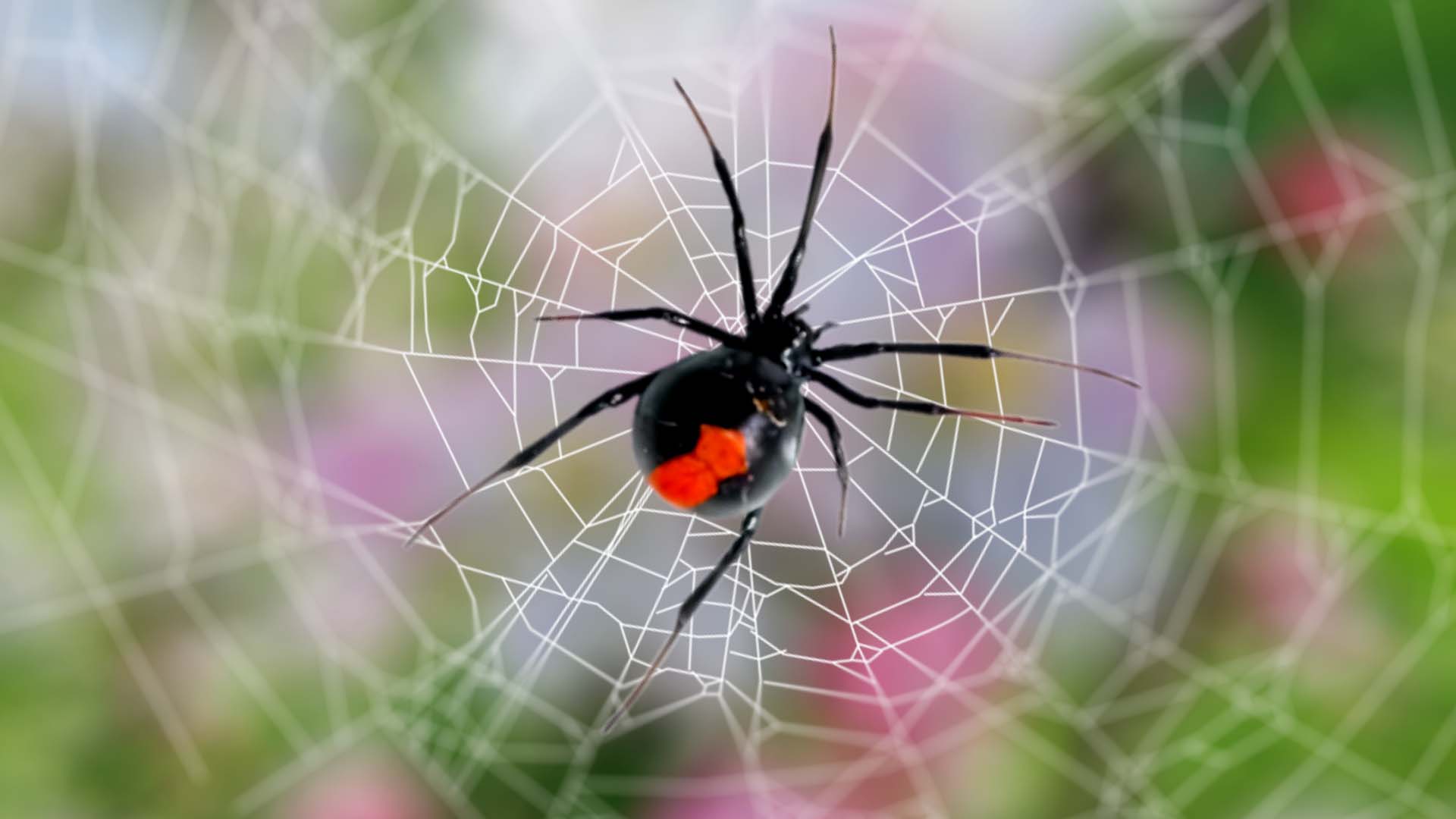The black widow spider, scientifically known as Latrodectus mactans, is infamous for its venomous bite and distinct appearance. Widely recognized for the red hourglass shape on the abdomen of the female black widow, these arachnids have garnered a reputation as one of the most venomous spiders in North America.
However, the often-overlooked male black widows play an equally intriguing role in the spider world. In this article, we’ll explore the characteristics, behavior, and venomous nature of male black widows, shedding light on their lesser-known role within the species.
Are Male Black Widows Poisonous?
Male black widows (Latrodectus mactans) are indeed venomous, but their venom is generally less potent compared to their female counterparts. The venom of male black widows is primarily used to subdue prey rather than for self-defense. While their bites can cause discomfort and local reactions, they are not considered as dangerous as female black widows.
However, it’s still essential to exercise caution around them, as some individuals may have stronger venom than others, and reactions can vary from person to person. If bitten, seeking medical attention is advisable.
Distinctive Characteristics of Male Black Widows
While female black widows are more well-known due to their potent venom and distinctive markings, male black widows have their own unique characteristics that set them apart. Male black widows are significantly smaller than their female counterparts, measuring only about half the size. They typically have longer legs relative to their body size, which aids in their movement and agility. Unlike the females, male black widows lack the iconic red hourglass marking and often exhibit more subdued coloring, with patterns ranging from brown to gray.
Behavioral Patterns of Male Black Widows
The behavior of male black widows is essential to understanding their significance within the species. Unlike some other spider species where males are at risk of becoming a meal for the females, male black widows often face a different challenge: mating with females that might see them as potential prey.
The mating process of black widows is a high-stakes endeavor for the males. When a male approaches a female’s web, he must carefully pluck the strings of her web to produce specific vibrations that communicate his intent and avoid triggering the female’s predatory instincts. If the female interprets these vibrations correctly, she may allow the male to approach and mate. However, if she perceives any threat, she might attack and consume the male.
Are Male Black Widows Venomous?
Yes, male black widows are venomous. They possess venom that they use to immobilize and digest their prey. However, their venom is generally less potent than that of female black widows, and their bites are not considered as dangerous to humans. While their bites may cause discomfort and localized reactions, they are not typically life-threatening. Nevertheless, it’s essential to avoid handling black widows or any venomous spiders to minimize the risk of a bite. If bitten, it’s best to seek medical attention for proper evaluation and treatment.
Significance and Evolutionary Implications
The seemingly paradoxical use of venom by male black widows raises questions about its evolutionary significance. It’s possible that the male’s venomous traits have evolved as a counter-adaptation to the female’s potent venom. By producing a milder version of venom, the male not only avoids accidentally killing the female during copulation but also potentially gains an advantage by influencing her behavior in his favor.
This aspect of the male black widow’s behavior highlights the complex and often underexplored facets of natural selection and sexual evolution. Such adaptations can arise from the intense pressures of natural selection, where even seemingly contradictory traits can coexist within a species.
Do Male Black Widows Have Hourglass?

No, male black widows do not have an hourglass pattern on their abdomen like female black widows. The hourglass marking is a distinctive feature found on the underside of the abdomen of female black widows. It is usually red or orange and is shaped like an hourglass or two connected triangles. Male black widows have a different appearance, often with more subdued coloration and patterns on their abdomen. They are typically smaller and less conspicuous than the females and lack the hourglass marking.
Do Male Black Widows Bite?
Yes, male black widows can bite, but they are generally less aggressive than females and are not known for actively seeking out prey or engaging in defensive behaviors. Male black widows are more focused on finding a mate during their short adult lifespan. They may bite if they feel threatened or provoked, but their venom is not as potent as that of females. While their bites can cause discomfort and mild local reactions, they are not considered as dangerous to humans as the bites of female black widows. Nonetheless, it’s best to avoid handling any venomous spiders to reduce the risk of being bitten.
Conclusion
While female black widows often steal the spotlight due to their venomous bites and iconic markings, it’s crucial not to overlook the equally intriguing male black widows. Their smaller size, distinct behavior, and venomous nature offer a fascinating insight into the intricate world of spider behavior and evolution. The role of male black widows in mating dynamics, with their use of venom as a tool for reproductive success, showcases the intricate and delicate balance between the sexes in the animal kingdom. As researchers continue to delve into the mysteries of the black widow species, we can expect to uncover even more secrets about the intriguing lives of these enigmatic spiders.





